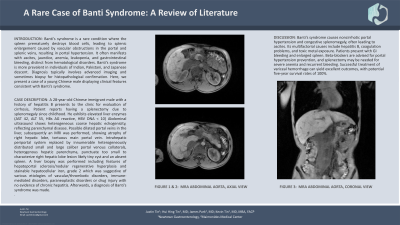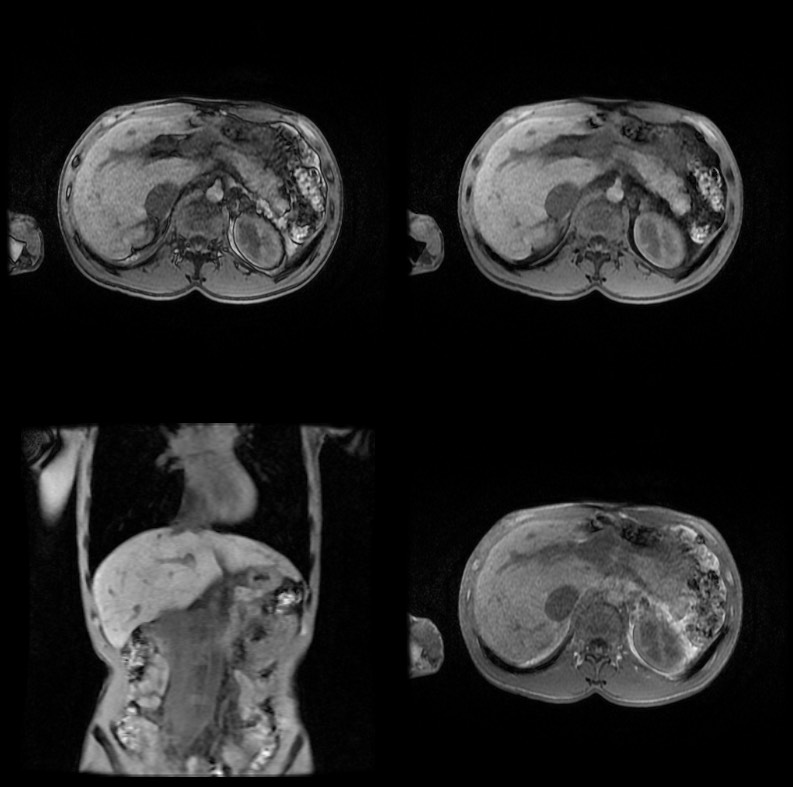Tuesday Poster Session
Category: Liver
P4853 - A Rare Case of Banti Syndrome: A Review of Literature
Tuesday, October 29, 2024
10:30 AM - 4:00 PM ET
Location: Exhibit Hall E

Has Audio
- JT
Justin Tin
Newtown Gastroenterology
Flushing, NY
Presenting Author(s)
Award: Presidential Poster Award
Justin Tin, 1, Hui Hing Tin, MD2, James Park, MD3, Kevin Tin, MD, MBA4
1Newtown Gastroenterology, Flushing, NY; 2Newtown Gastroenterology, Roslyn, NY; 3Maimonides Medical Center, Manhasset, NY; 4Newtown Gastroenterology, New York, NY
Introduction:
Case Description/Methods:
Discussion:

Disclosures:
Justin Tin, 1, Hui Hing Tin, MD2, James Park, MD3, Kevin Tin, MD, MBA4. P4853 - A Rare Case of Banti Syndrome: A Review of Literature, ACG 2024 Annual Scientific Meeting Abstracts. Philadelphia, PA: American College of Gastroenterology.
Justin Tin, 1, Hui Hing Tin, MD2, James Park, MD3, Kevin Tin, MD, MBA4
1Newtown Gastroenterology, Flushing, NY; 2Newtown Gastroenterology, Roslyn, NY; 3Maimonides Medical Center, Manhasset, NY; 4Newtown Gastroenterology, New York, NY
Introduction:
Case Description/Methods:
Discussion:

Figure: Abdominal MRI from the patient
Disclosures:
Justin Tin indicated no relevant financial relationships.
Hui Hing Tin indicated no relevant financial relationships.
James Park indicated no relevant financial relationships.
Kevin Tin indicated no relevant financial relationships.
Justin Tin, 1, Hui Hing Tin, MD2, James Park, MD3, Kevin Tin, MD, MBA4. P4853 - A Rare Case of Banti Syndrome: A Review of Literature, ACG 2024 Annual Scientific Meeting Abstracts. Philadelphia, PA: American College of Gastroenterology.

